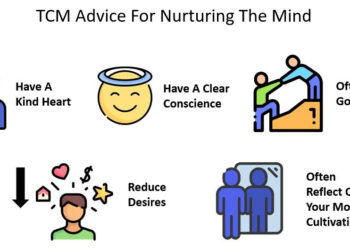“], “filter”: { “nextExceptions”: “img, blockquote, div”, “nextContainsExceptions”: “img, blockquote, a.btn, a.o-button”} }”>
Heading out the door? Learn this text on the brand new Exterior+ app accessible now on iOS units for members!
>”,”identify”:”in-content-cta”,”sort”:”hyperlink”}}”>Obtain the app.
“How’s everybody doing?”
“What brings you to class right now?”
“Something happening together with your our bodies you’d like me to concentrate on?”
These might sound like easy questions yoga academics ask initially of sophistication. However generally the responses to those icebreakers are waaay greater than you bargained for. Whether or not a trauma dump a few latest heartbreak or a retelling of a verbal altercation over a parking spot, what college students expose—and the non-public nature of it—might be flooring.
College students can overwhelm the category with their very own emotional wants, treating class as remedy. (Yoga academics might be responsible of oversharing, too.) When this occurs, it takes time and focus away from everybody’s expertise of yoga. But most yoga academics have little coaching in the best way to deal with this dynamic.
“Not permitting somebody to encroach in your—or your class’s—energetic and emotional house is a crucial ability to have,” says Juliana Anastasoff, whose neighborhood well being program at UNM-Taos trains future well being employees in setting boundaries with their shoppers.
Though it may really feel difficult to handle these moments with sensitivity, you’ll be able to empower your self with methods that get class again on observe with respect for everybody…and assist restrict oversharing earlier than it occurs.
The best way to Forestall Scholar Oversharing in Class
Since college students’ cultures, households, and personalities can result in very completely different concepts about how and the way a lot to reveal about themselves, it pays to ascertain what creates a secure local weather for everybody.
Begin With Silence
Is speaking *truly* obligatory or useful earlier than class? Agnello advises academics to fastidiously contemplate this. Asking open-ended questions can set the stage for pupil oversharing, so you’ll be able to decide to forgo them altogether.
As college students file into class and decide on their mats, maybe you sit or stretch quietly. This will set the tone for sophistication and encourage silence amongst college students.
Give College students House to Really feel
Some college students come to class with troublesome feelings; that doesn’t imply they should discuss about them. As a trainer, yow will discover methods to point out compassion with out opening the door to oversharing.
At first of sophistication, you’ll be able to open with a meditation that offers college students an opportunity to silently acknowledge troublesome experiences or emotions. Agnello likes to ask college students to note what, if something, is bothering them. “Perhaps we are able to inhale what we’d like extra of and exhale what we need to launch,” she explains. That is additionally a lesson on pratipaksha bhavanam, or “channeling the other.” For example, you’ll be able to have college students exhale their nervousness, unhappiness, or anger, and inhale pleasure, peace, and love.
In the event you do select to supply verbal check-ins with college students about how they’re feeling, it’s possible you’ll need to set closing dates—Agnello suggests 30 seconds to a minute—or perhaps a one-word share.
Present a Protected Framework For Sharing Throughout Trainings
In workshops and trainer trainings, pupil sharing is usually important. These disclosures might be worthwhile and even illuminating, broadening the attention of everybody within the room. On the identical time, emotional unloading can really feel nearly sanctioned in these environments, finally burdening the sharer and the listeners.
It’s not that feelings are off limits. “There are some college students who can share private data in a matter-of-fact manner,” Anastassoff says. She has noticed college students skillfully join their private tales to the topics beneath dialogue. The essential factor is that contributions profit and never burden the category, she explains.
Having the category collectively determine upon guidelines for sharing may also help. Anastasoff has college students provide you with what she calls “agreements.” Since college students generate the agreements themselves, they’re finally accountable to one another. She additionally values the train as a method for instructors to mannequin the best way to share energy with their college students.
To introduce agreement-setting, Anastasoff begins by reminding college students of the matters beneath dialogue. This could possibly be one thing like, “Right now, we’ll be speaking about a number of the robust experiences that may have an effect on the chakras.” Then, to kick off the brainstorming, she asks, “To ensure that everybody to really feel supported and comfy, what do we’d like from one another?” Anastasoff suggests ensuring all college students are heard. Relying on the dimensions and size of your class, you possibly can strive giving everybody as much as a minute to talk.
Anastasoff writes college students’ concepts down and asks the group what this appears like, a course of that can be utilized to nudge concepts round acceptable sharing. If somebody’s settlement is nonviolence (ahimsa), she may inquire what this appears like. Does it imply not interrupting? Not utilizing inflammatory language?
“Inevitably, the issues that I would dictate from a spot of authority, they provide you with on their very own,” says Anastasoff.
The best way to Curb Scholar Oversharing Whereas It’s Occurring
Regardless of your greatest efforts to cease oversharing earlier than it begins, class can nonetheless be sidetracked by pupil disclosures that zap time and vitality. It may be difficult to halt sharing that’s underway, and to know what to say in its wake.
We might really feel ungenerous if we interrupt, or transfer on to a unique topic, however Anastasoff emphasizes that boundaries profit the group. “You’re there to serve a classroom of individuals. And in the event you’re being distracted, or if class is being monopolized by the wants of 1 particular person, then that’s not honest to others,” she says.
With just a few methods in hand, you’ll be able to present college students you worth them whereas additionally refocusing class to profit everybody.
Provide Validation
To assist reaffirm a pupil’s experiences and feelings, validation is admittedly essential, in accordance with Agnello. She and Anastasoff counsel academics specific this to an oversharing pupil by saying:
- “Thanks a lot for sharing this.”
- “Thanks for being so uncooked.”
- “Thanks for trusting us.”
- “It’s taken rather a lot so that you can be right here.”
Then you’ll be able to swiftly redirect the category to the topic at hand.
Take Accountability
Make your self accountable for the coed’s oversharing. For example, if a pupil’s story is encroaching on the category time, Agnello suggests saying one thing like, “You realize what? I’m so sorry; I made a mistake. I wasn’t clear on closing dates; within the curiosity of giving everyone equal airtime, we are able to solely provide you with another minute.”
You possibly can even take accountability for not being clear about your scope, which, as a yoga trainer, doesn’t embrace providing counseling. “I’m sorry: I wasn’t clear on my scope as a yoga trainer; if we go any farther, I could also be tempted to present you recommendation, which is one thing I’m not skilled to do. However what I can do is educate yoga.” From right here, you’ll be able to seamlessly transition into the follow.
Look Forward
A category coopted by oversharing is a category that has misplaced its ahead momentum. Deliver up what’s coming subsequent within the class or coaching, and, in the event you can, situate it as one thing that may profit the oversharing pupil.
You possibly can say:
- “I’m hoping right now’s follow provides us the possibility to course of a number of the feelings which are developing right now.”
- “Right now’s focus is pranayama, which some college students discover calming.”
- If the coed has broached a topic that will likely be addressed later in your time collectively, you possibly can guarantee them, “That is one thing we will likely be speaking about slightly extra in our second session. I’ll be curious to know in the event you discover that worthwhile.”
Provide Self-Care Methods to the Group
Generally help might be provided to the entire group in such a manner that nobody is singled out. If, whereas sharing, a pupil appears to be combating their feelings, you possibly can say one thing alongside the strains of, “It’s regular to expertise fluctuations of the thoughts; stilling these fluctuations might be so difficult {that a} host of various yoga methods had been developed over centuries to assist. This is likely to be a great time to strive one, and see how effectively it really works for us.” Then you’ll be able to information the group into meditation or one other calming follow.
A grounding approach that the entire group can strive is sensory consciousness. “Title 5 issues you’ll be able to see, 4 issues you’ll be able to really feel, three issues you’ll be able to hear, two issues you’ll be able to odor, one factor you’ll be able to style,” is a traditional strategy Agnello recommends.
Subsequent time a pupil overshares, contemplate it a chance to tune into the wants of the room and select your response with care. The boundaries that create security will shift relying on the scholars within the room and different variables. The identical technique most likely gained’t work each time—and that’s okay. Keep current to grasp the wants of a given state of affairs, simply as you do in your yoga follow.
Boundary-setting generally is a kindness, a manner of modeling take care of oneself and the neighborhood. In reality, by gently drawing some strains, it’s possible you’ll even encourage college students to attract strains for themselves.












